4x Brazilian delicacies from cassava
Cassava, also known as manioc, is an edible root. More and more often I see it in the Dutch supermarket, but it's not really known here yet. In Brazil the cassava is much better known and is eaten daily. In the time that I lived in Brazil I often ate it and used it in the kitchen. These are my favourite Brazilian delicacies made from cassava.
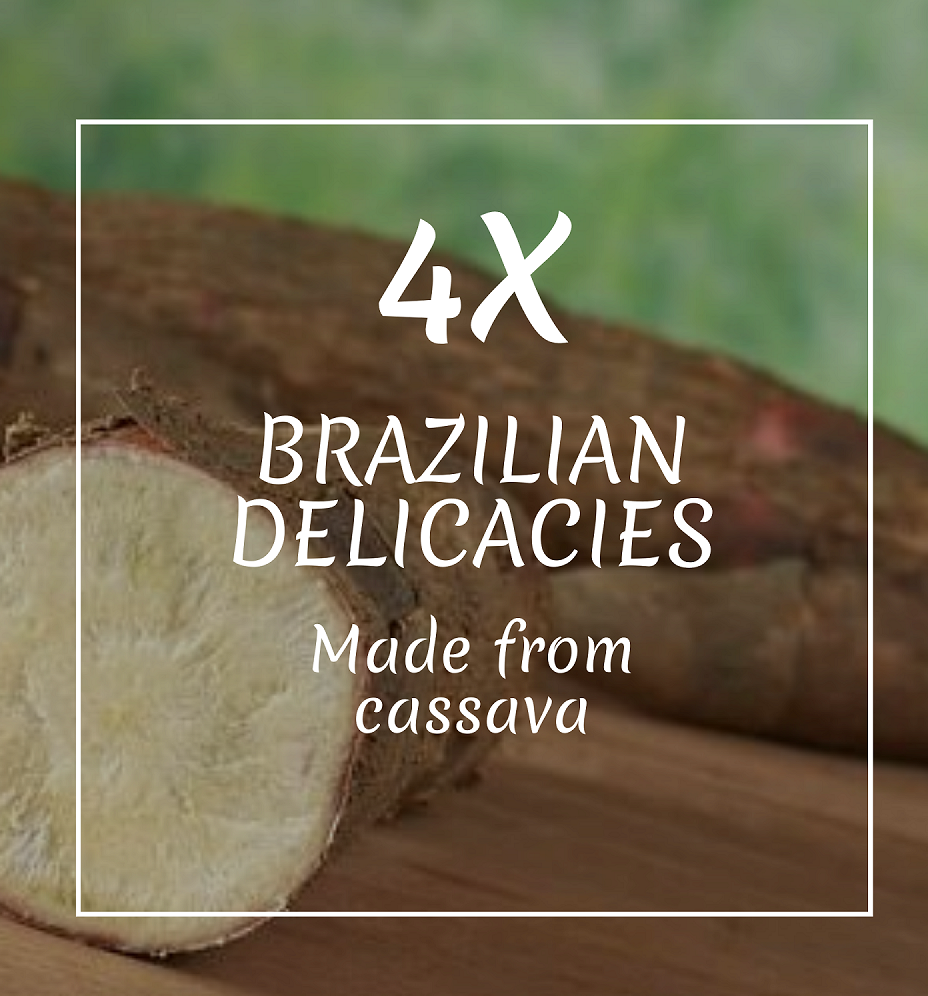
What's Cassava?
Cassava or manioc is an edible root commonly eaten in Africa and South America. Originally it comes from my native country Brazil. Archaeological discoveries even show that cassava has been cultivated in Brazil and Venezuela since 3000 BC. After the discovery of the American continent the Portuguese spread the tuber to Africa and Southeast Asia. The taste of cassava is difficult to explain. It resembles that of a potato but has a stronger taste. It's fibrous and nutritious. I remember from the old days that our gardener sometimes arrived with a gigantic cassava root from his own garden, more than a metre long. Proudly he gave it to my mother, who already saw it coming; we would eat cassava again, or as it is called mandioca in the south of Brazil. Luckily there is enough to make from mandioca.

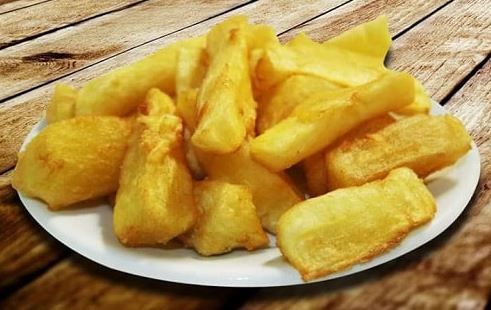
Mandioca Frita
My favourite way to eat cassava is as mandioca frita, or fried mandioca. For this you first peel the tuber and then cut it into smaller pieces. These pieces have to be cooked and finally you fry them in the fryer. Delicious as a side dish or as a snack. You can actually see it as the Brazilian variant of fries.
Biscoito de Polvilho
This Brazilian snack, a variant of chips, is eaten mainly in the southwest and northeast of the country. Where this snack comes from is unknown, but it appears to have been made by the cooks of the pheasant (farms) in the state of Minas Gerais, a region with a lot of colonial history, since the Portuguese colonization. The basic ingredients for this snack are water, milk, oil and cassava flour. This popular snack is sold in every supermarket, but anyone who has ever been to Rio de Janeiro will probably have come across the biscoito de polvilho on the beaches of Copacabana and Ipanema. The taste of this biscoito de polvilho is quite light, so it is not a surprise it is called biscoito de ventoh here, or wind biscuit.
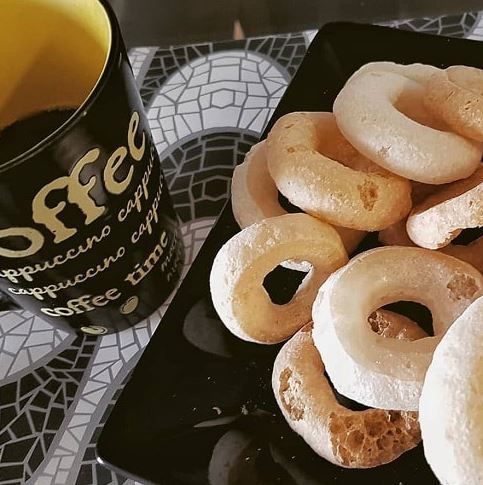
Pão de Queijo
This delicious sandwich is one of the things I miss the most now that I live here in the Netherlands. When I visit Brazil , I often look for a delicious pão de queijo at the airport. There is even a chain called 'Casa do Pão de Queijo', or house of the pão de queijo. Literally translated pão de queijo is a cheese sandwich, but it cannot be compared to the cheese sandwich we know in the Netherlands. Although the pão de queijo is a popular snack in Brazil, few Brazilians know that it comes from the state of Minas Gerais, known for the colonial part of Brazil, with cities like Ouro Preto and Tiradentes. In this state, the recipe has been handed down for several generations. There are therefore several variations on this dish. One of the stories tells that the dish was created by grating an old piece of cheese and mixing it with cassava flour to make bread for the next day. Others believe that pão de queijo originates from a variation biscoito de polvilho, also made from cassava flour. The pão de queijo became a softer version of the biscoito de polvilho by adding cheese. In Brazil you often find pão de queijo at breakfast in hotels, in some restaurants and bars and in bakeries. Of course, you can also make it yourself.
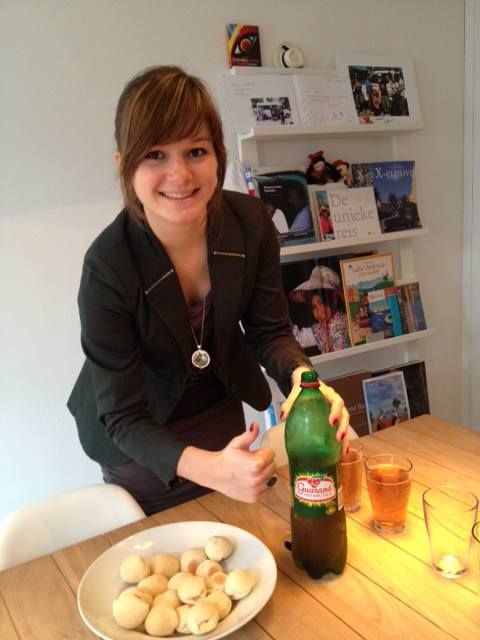
Recipe for Pão de Queijo
For approx. 20 buns you will need:
- 240 ml milk;
- 120 ml oil;
- 260 grams of Tapioca (very fine cassava flour available at the nature store and Toko);
- 1 tsp salt;
- 2 eggs;
- 90 grams of grated old or parmesan cheese.
Method of preparation:
Bring the milk, oil and salt to a boil in a pan. Turn off the heat as soon as the mixture is boiling and add the cassava flour (tapioca). Mix well until a smooth batter is formed. Leave it to cool and then add the eggs one by one, together with the cheese and knead well. Make balls of about 2 cm and place them on a baking dish with baking paper. Bake the buns in a preheated oven at 180 degrees for about 30 minutes until golden brown. A pão de queijo is at its best when it just comes out of the oven!
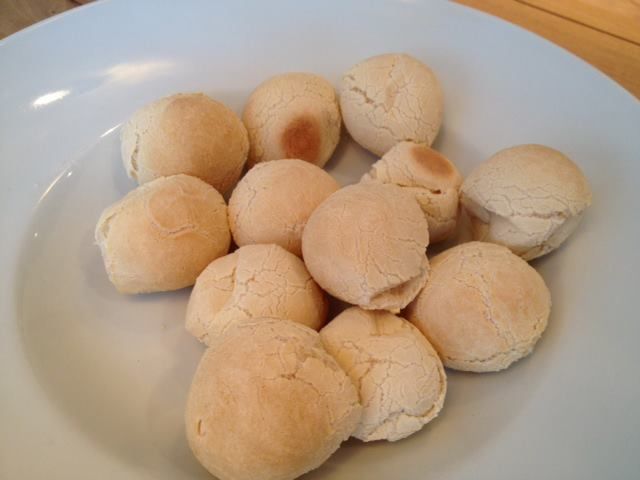
Tapioca
In recent years, due to the trend of healthy eating, this dish has been highlighted several times. It's a kind of crepe, made of, you see, cassava flour. It is considered a relatively healthy dish because it contains no fat, no gluten and little salt. In addition, it's fairly easy to make. The tapioca crêpes originate from the north and northeast of Brazil. This is where the dish originated during the Portuguese colonization, as a substitute for bread. At that time there was a shortage of wheat flour and cassava was widely available. The tapioca crepes are available in various flavours; sweet, salty and with various fillings. Think of chocolate, banana, ham/cheese and everything you can think of.
Ingredients (for 1 crêpe):
- 2 - 3 tablespoons tapioca flour;
- 25ml water;
- filling of your choice.
This is how you make it:
Mix the tapioca and the water in a mixing bowl until it stops sticking. Then sieve the mixture through a coarse sieve. Take a frying pan with a good non-stick coating and put it on high heat. Place the sieved mixture in the pan and press it flat with a soup spoon. Let it fry until the mixture sticks together well, then turn it over and fry for a few seconds on the other side. The crepe is ready to fill with ingredients of your choice. Roll the crepe up and cut it in half, have a good meal.
Travel through Brazil?
Which of the above delicacies do you like best? Brazil has many more delicious dishes and drinks and the nice thing is that each region has its own specialty. Would you like to make a trip and really discover the culture? Then it is very nice to follow a cooking workshop. Learn how to make Caipirinha in Rio de Janeiro or prepare a tasty fish in the Amazon. Would you like to know more? Then take a look at the travel itineraries that we have put together for inspiration. You can book these trips directly, but we are also happy to create a personal programme based on your wishes and ideas.
Do you have a direct question? Feel free to contact us. Call +31 73 610 62 04 or send an email to info@sapapanatravel.nl. We are happy to help.